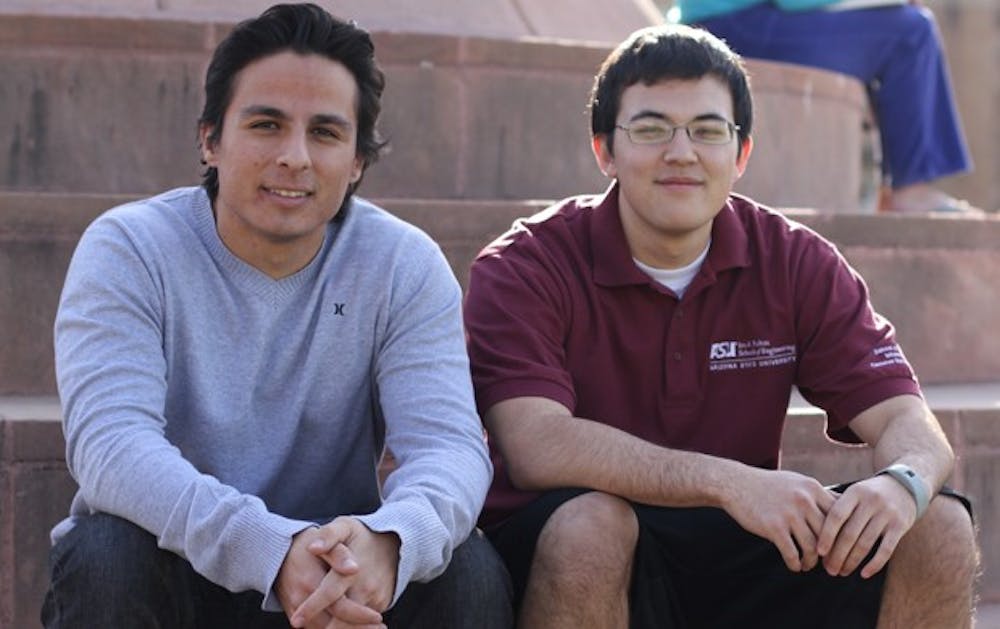
If a couple of Arizona State University students told you that feces could solve a host of pressing world issues, you might say they’re full of it.
Eric Kern and Charlie Rodriguez hope not. Kern and Rodriguez are the masterminds behind Project ZooPoo, an initiative that combines all of today’s hottest buzzwords – sustainability, local, profit, poop (all right, maybe not that last one) – and turns them into something radical: a practical plan that just might work.
The essence of Project ZooPoo is this: Zoos spends thousands of dollars each year (approximately $150,000) to dispose of animal waste. Animals absorb very little nutrients from the food they ingest, which leaves their waste chockfull. Rather than waste the waste, Kern and Rodriguez propose that it be mixed with compost to create a nutrient-rich slurry in which algae can be farmed. The algae can then be used to make a dietary supplement for the animals – and that’s just the beginning.
“We want to do the Phoenix Zoo and the San Diego Zoo and have it be super successful and spread to zoos around the world,” Rodriguez, a civil engineering senior, says. “They should be all for it because it would be taking away one of their biggest expenses and turning it into a money-maker.”
The project began in an Engineering Projects in Community Service (EPICS) class.
“We partner multidisciplinary student teams with corporations and partner with nonprofit organizations,” says Richard Filley, director of the EPICS program. “They tackle a real social challenge or issue. This is taking a look at the food cycle and asking a) how do you get rid of animal waste? And b) how do you feed your animals?”
Filley introduced Kern and Rodriguez to Mark Edwards, an ASU professor and author who developed the technology behind the algae farming and serves as their project mentor. Kern and Rodriguez are picking up where a previous team left off (the project started promisingly but petered out in the other team’s hands) and are making a big push to raise awareness and funds.
“Mostly we’ve been doing a lot of research and contacting people,” Kern, an industrial engineering sophomore, says. “We’ve done several presentations like Ignite and the ASU Innovation Challenge.”
They’ve also posted their solution on ASU’s 10,000 Solutions website and applied for grants.
“Pulling it off is the tricky part,” Rodriguez says. “Funding is going to be one of the biggest challenges, but the promise that it could take off is exciting. Eventually we want to try to start a company with it, an algae consulting firm.”
Filley is an enthusiastic champion of the project.
“I think the potential for this idea is huge,” Filley says. “The fact that it addresses two different elements of the food cycle makes it very green and there’s a clear economic value. Frankly, if it works out in Phoenix, we could do it anywhere in the world.”
Kern and Rodriguez are in talks with the Phoenix Zoo and hope to have a small-scale system in place by next month and a large-scale system in place by this summer.
“We’re doing lots of paperwork with them and they’re excited about it,” Rodriguez says. “They’re treating it like a study. Hopefully everything will work out.”
If successful, Project ZooPoo could branch out into other species of algae – there are over 20,000 – and find uses beyond animal food. Kern and Rodriguez say algae can be used for crude oil as a fuel source and that 24 species are digestible for humans. They are quick to tout the nutrition benefits of algae, which can be a good source of omega-3 fatty acids, fiber, nitrogen and phosphorus. One tablespoon of spirulina, a human-friendly form, has the same protein content as a chicken egg.
“It also reduces carbon because it takes in two pounds of CO2 for every one pound of algae,” Rodriguez says. “It’s useful and powerful.”
As for the project’s name, Kern and Rodriguez say they are used to the snickers and the scatological jokes they encounter while presenting their idea to classmates and other audiences.
“At first they were giggling because of the name, but we always get good questions and positive feedback,” Rodriguez says. “We just embrace it. That’s kind of the point, that it sticks with them and they’ll remember it.”
They also like to quote their professor’s humorous assessment of the project.
“He always says it’s ‘turning brown waste into green gold,’” Kern says with a laugh.
Contact the reporter at llemoine@asu.edu




